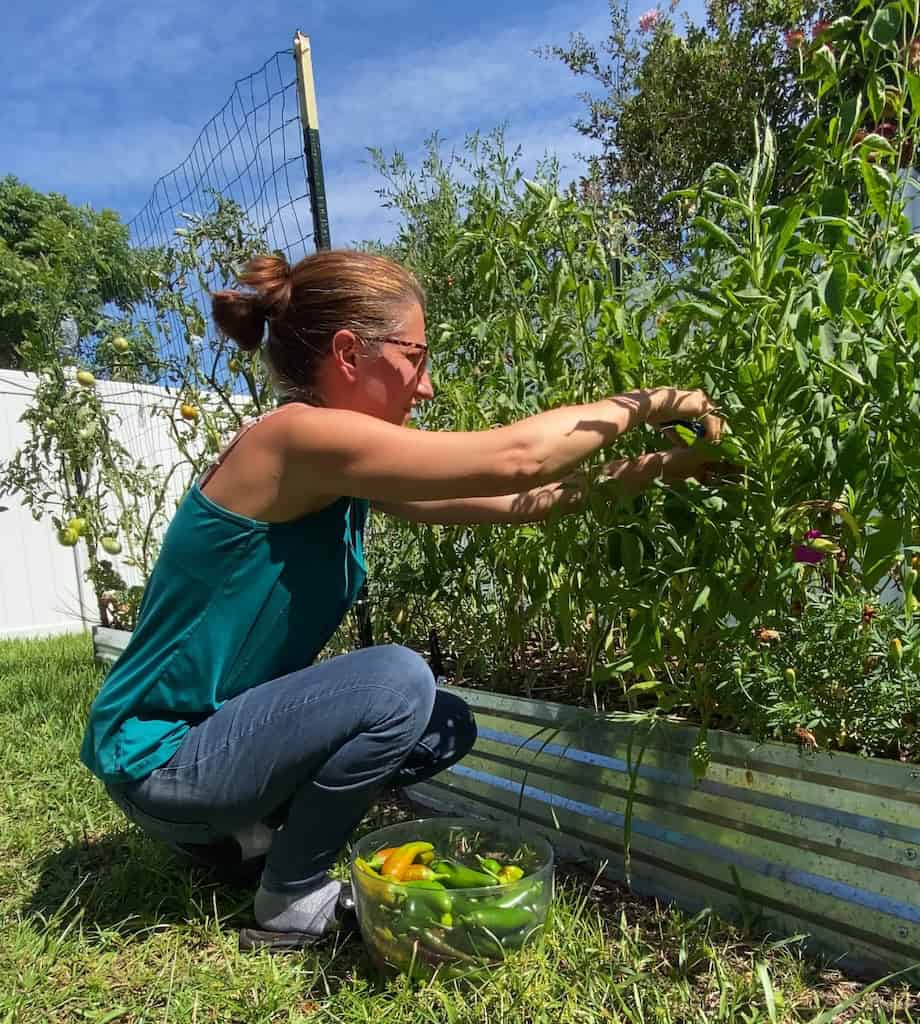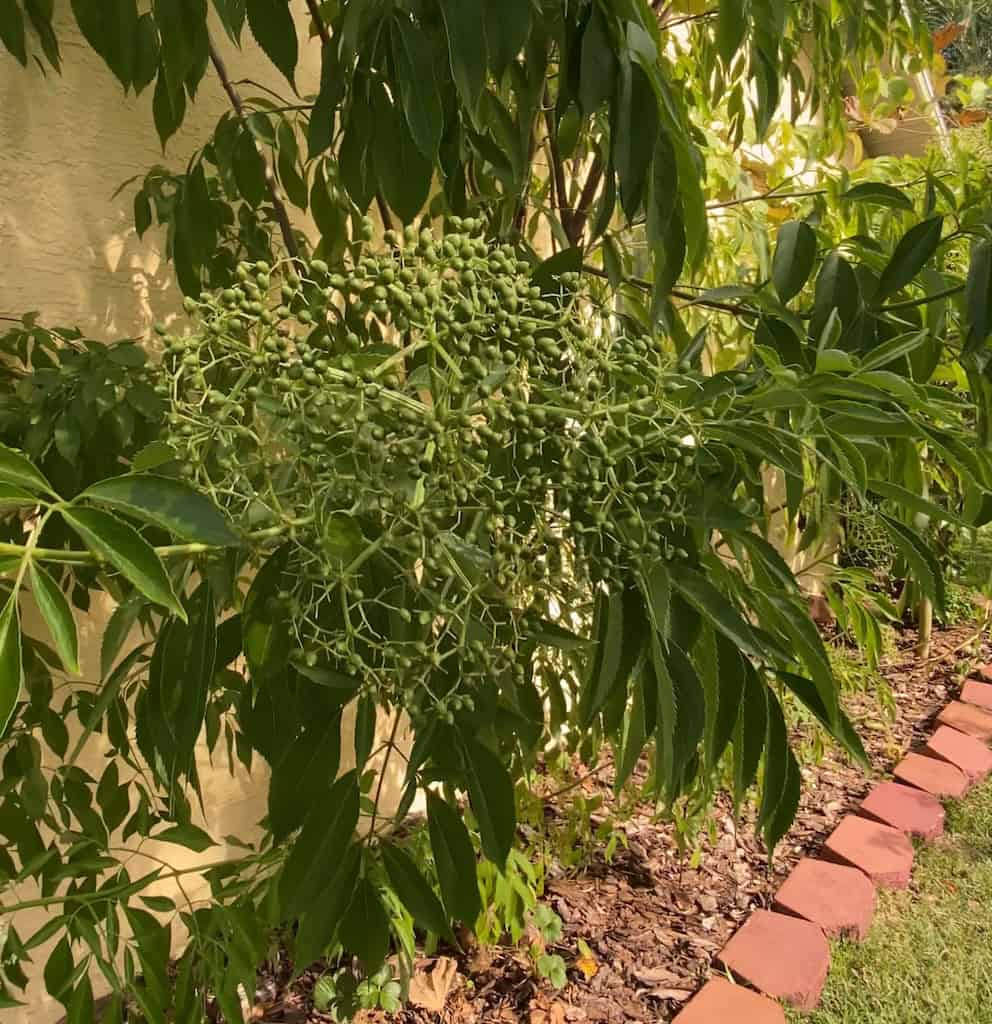Last Updated on June 27, 2024 by Homegrown Florida
This post may contain affiliate links. Read full disclosure here.
Is it possible to grow food in areas where temperatures regularly hit 100°F? Some might say it’s not, but I believe it depends on what you’re trying to grow. If you’re thinking about growing broccoli or lettuce, the answer is probably no—they don’t fare well in such heat. However, sweet potatoes and other heat-tolerant plants might surprise you. The key to successful gardening in extreme heat is being very selective about what you grow.
Today, I’m walking you through my garden to show you what’s thriving in our scorching summer climate and what isn’t.
The Raised Beds
Bed 1: Peppers and Beans
In this bed, I’ve got a variety of hot peppers. There are purple cayenne peppers, Anaheim chili peppers, and some poblanos that have already been harvested once. At the back, you’ll find a bunch of jalapeños climbing up. Next to the peppers, I’m growing lima beans and cranberry beans, which are just starting to show their pretty pink and white colors. Hidden behind the beans are some peanuts.

Bed 2: Sweet Potatoes
This bed is an experiment. I planted sweet potatoes here to compare with those growing in my Greenstalk vertical containers. Both are doing well so far, but they have a long way to go before they’re fully established. These are the perfect root crop for gardening in extreme heat.

Bed 3: Black Beans
This bed is a bit of a mix, but it’s home to a variety of plants. There’s the famous Puerto Rican black bean, bee balm for medicinal purposes, and volunteer Everglade tomatoes. The black beans will eventually take over this whole bed and produce an abundance of dry beans.
Bed 4: Cantaloupe
In this bed, I’m growing cantaloupe at each corner. Surprisingly, cantaloupes can do quite well during the summer. The cantaloupes are especially resistant to pests due to their tough rinds. However, they are starting to show signs of powdery mildew, which I’m treating with a peroxide mix, 10tbsps to 1 gallon of water every week.

Bed 5: Sweet Peppers
I planted 22 different kinds of sweet peppers to see which ones do best in our climate. Unfortunately, I wasn’t impressed with any of them this year. While the Cubanellas and pimentos did okay, none were extraordinary. Last year these two varieties did amazing for me. I’m hoping they’ll perform better in the fall when we have more rainfall.

Bed 6: Watermelons
My Moon and Star watermelons are doing great this year! I’ve got five so far, with more potentially on the way. In the past, I’ve had issues with diseases and pests, but this year, a family of cardinals seems to be keeping the bugs in check and a local drought is reducing the risk of disease spreading from our usual daily rains.
Container Garden
In my container garden, I’ve got a mix of ginger, turmeric, lemongrass, corky stem passionvine, coral honeysuckle, pineapples, tropical spinaches and a collection of herbs. I like growing many of my perennial plants in containers so I can move them during the summer to very shady spots in the yard to reduce the heat stress.
Fruit Trees and Shrubs
Sherbet Berries and Elderberries
The Indian sherbet berry tree is producing its first flush of berries, which taste like sour candy. My elderberry bush has grown significantly and is full of berries this year, which I plan to use for syrups and tinctures. I’m not getting the best pollination but I’m excited that I have gotten as much as I have given I’m not growing a second tree for it to pollinate with.

Avocado Tree
For the first time, my avocado tree is producing fruit, with about 20-30 avocados expected this year. This is the Day avocado which is a type of hass avocado that does well in our humid climate. The exciting part about this tree is it’s short habit so it fits well in my suburban lot. Also, it has some cold tolerance which protects it during our occasional frosts.
Mulberry Tree
I’ve also got two different dwarf mulberries, which are producing again after being cut back aggressively. The second harvest will be smaller than the main harvest I had this last spring but it should be enough for fresh eating.
Despite the challenges, there are plenty of plants that can thrive when gardening in extreme heat. From hot peppers and beans to melons and sweet potatoes, choosing the right varieties is key. Additionally, managing pests and diseases through natural methods can make a big difference. Happy gardening!




